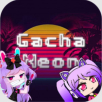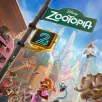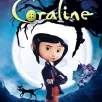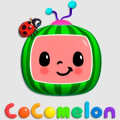Cocomelon
The Enigmatic World of Cocomelon
In the universe of children's programming, a gem has steadily been capturing the hearts of its pint-sized audience while perplexing adults with its simplistic charm and repetitive nature. This phenomenon is known as Cocomelon. At first glance, Cocomelon appears to be a regular addition to the children’s show roster, but its impact and reach suggest otherwise. Surpassing traditional benchmarks, it has not just carved a niche but has established itself as a dominant force on platforms like Netflix and YouTube.
Cocomelon's journey from a modest YouTube channel to a titan of toddler TV signifies a seismic shift in what captivates the kiddie demographic. Its formula, rooted deeply in vibrant CG animations and nursery rhymes, taps into the psyche of its audience, offering more than just entertainment. But what lies beneath its glossy surface? This review delves into the heart of Cocomelon, exploring the fabric of its content, its glaring weaknesses, and, ultimately, what makes it a staple in households around the globe.
A Closer Look Behind the Curtains of Cocomelon
Amid the cheerful animations and catchy tunes, Cocomelon harbors attributes that have stirred debate among parents and educators alike. The series is defined by its replication of nursery rhymes and simplistic stories, designed to be excessively palatable for its young audience. However, this simplicity borders on redundancy, often recycling content under the guise of educational value. The repetition, seen as a tool for learning, can teeter on overuse, potentially stifling creativity and exploration in its viewers.
Moreover, the show's reliance on digital animation to captivate children has raised concerns about screen time and its effects on developmental milestones. The characters, with their over-exaggerated expressions and scenarios, sometimes do not offer the realism needed for toddlers to relate and learn from real-life situations. This artificiality, coupled with the infinite loops of similar-sounding songs, could hinder emotional and social development, which thrives on diversity and complexity.
Notably, the dichotomy of Cocomelon's content quality is stark. While it stands as a beacon of harmless content amidst the chaotic seas of children’s programming on the internet, it also embodies the quintessential ‘low-effort, high-reward model. The content, often criticized for being formulaic, lacks the depth and educational rigor found in competitors like Sesame Street or Bluey, which blend entertainment with tangible learning outcomes in more innovative and interactive ways.
Conclusion: Unpacking the Cocomelon Conundrum
Cocomelon, like any other cultural phenomenon, is a product of its time. In an era where parents are increasingly reliant on digital babysitters to carve out moments of solitude, Cocomelon has emerged as a safe harbor. Its unwavering popularity underscores a universal truth - simplicity and predictability can sometimes be the most potent form of engagement for the very young.
Yet, the critique of Cocomelon isn’t without merit. Its weaknesses - repetitiveness, lack of depth, and over-reliance on digital animation - serve as a clarion call for content creators to innovate within the children's media space. There’s a middle ground that can offer engaging, educational content without sacrificing creativity or pedagogical value.



























